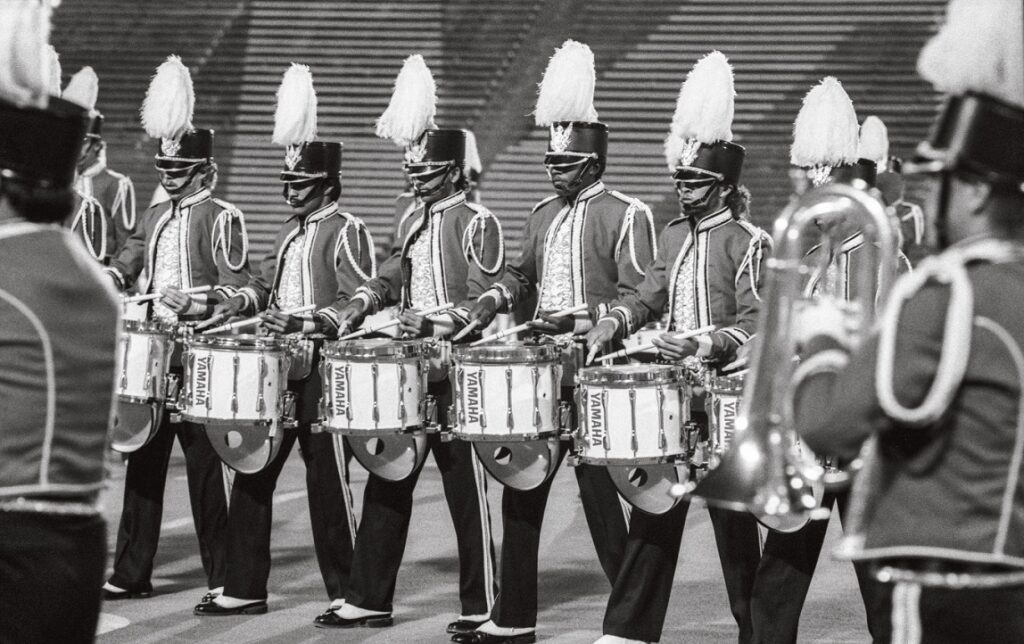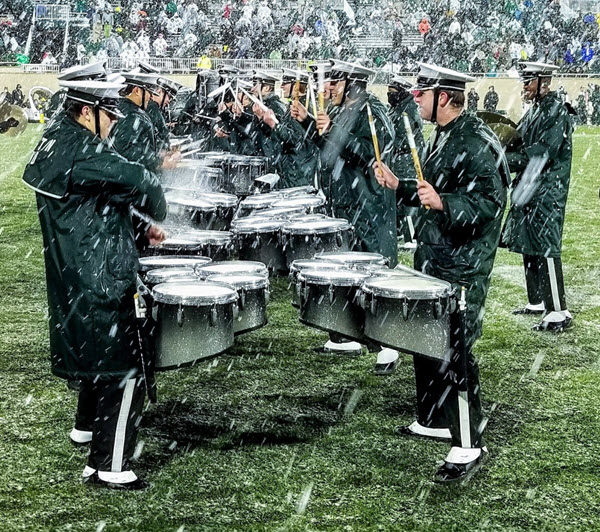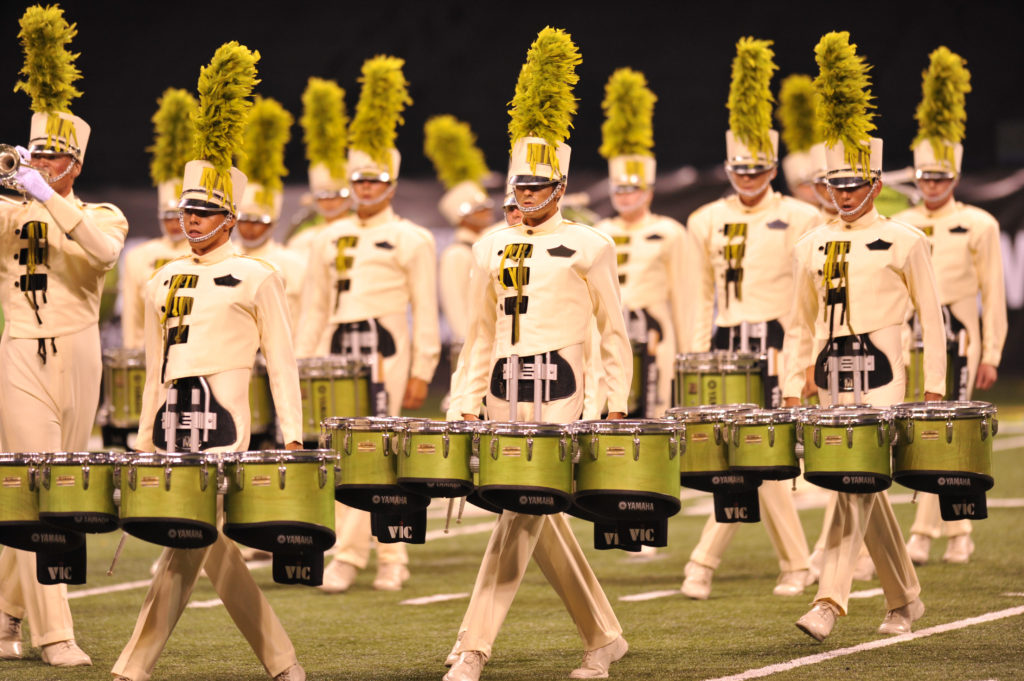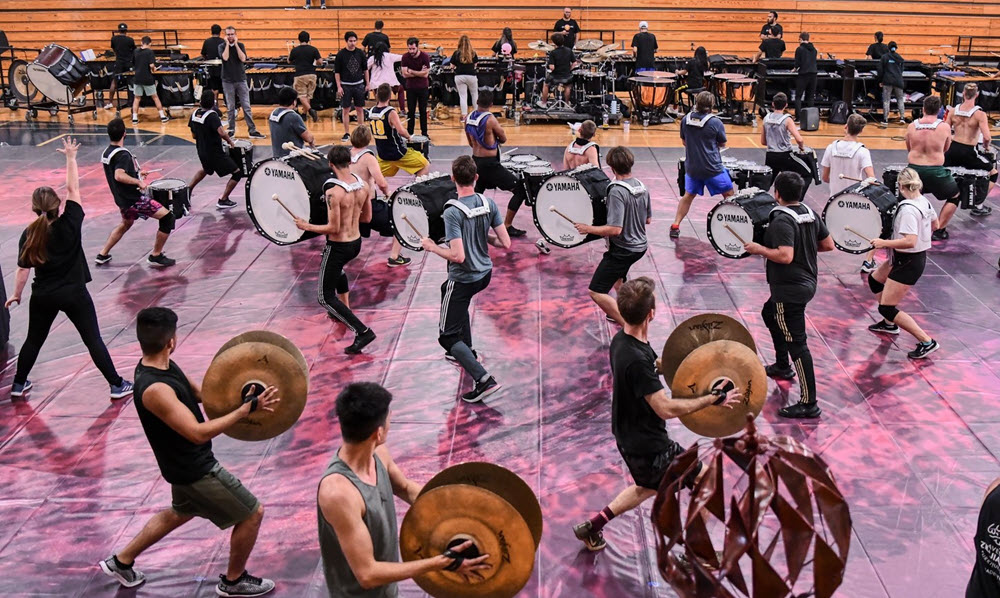Nine Things to Know Before Buying a Drumline
Tips to ensure you make the right purchase.
Congratulations! You landed your first job as a high school band director, a position that you’ve been preparing for ever since you were in your high school band. The principal wants you to revitalize the marching band program, and you look forward to a few big parades this fall, along with the half time show at the home football games. You have 100 kids in the program, a small booster group and a budget to get a new drumline.
The bad news is that you don’t know much about drumlines. You were the first chair clarinet in your college wind ensemble, and you only did one year of collegiate marching band because it was a requirement for your general music degree. You have watched a few drum corps shows over the years and have some friends who marched in The Bluecoats and the Madison Scouts so you know there are more than a few drumline brands out there … but you really can’t tell one brand from another.
How can you make a smart choice for your students, spend the school’s money wisely and purchase quality instruments that will be delivered in time for band camp? The purchasing process can be a bit complicated, but with a little research, you can make an informed decision. Here are nine tips to keep in mind:
1. Talk to Your Local School Music Dealer
Local dealers are great resources, especially if they’ve been in business for a long time. Ask them lots of questions, such as: Which musical instrument brands hold up over time? Which brands can get parts without delay? How long does it take to get delivery?
2. Don’t Be Fooled
There are some brands that sell different drums to drum corps or a college than they do to high schools. With other brands, the products used by a college or drum corps is exactly the same as those you’ll be buying for your high school. Make sure this is the case, so you are not sold something that is different than what is advertised.
3. Understand Your Programmatic Needs
This comes down to the amount of marching your program will be undertaking. Will there be two parades or ten each year? Is your program producing one halftime show or four shows each fall? Are you also developing an indoor percussion program? Is your program participating in larger regional events such as USBands or Bands of America marching festivals? The answers to these questions will narrow the choices relating to drum finish, installed drumheads, size options and purchase quantity.
4. Compare Options and Prices
All drum brands are not created equal. Established brands have a long history of doing it right. Their instruments have a well-documented construction process and have been tested with the top drum and bugle corps for years. If one drumline price quote is much less expensive than the others, there may be a reason why. More often than not, cheap drums sound cheap, don’t hold up well and will likely end up costing you more in the long run.
5. Colors Options are Abundant
Do you want a stain or a wrap? Do you want your drums to blend in or contrast with your uniform? Do you need a custom color? Will you change the color each year to blend in with your halftime show? Keep in mind that a custom drum finish will probably take extra time to deliver, and there will probably be an upcharge. Standard finishes are great options to supplement your traditional school colors. Be sure to ask if drum finishes for the brand of choice are UV treated to prevent color fading. Having your white drums turn yellow after the first year will be a real disappointment.
6. Ask Around for Advice
Ask collegiate marching band directors and percussion friends for recommendations to the brands they prefer. Was the company sales representative available when needed? Were the drums easy to carry? Where the carriers flexible enough to fit students of all sizes?
7. Drumheads are Important
Be sure you know the type and brand of head preinstalled on each drum, and get it in writing. This is important because low-cost, non-branded drumheads may not be very usable, and so can lead to an expensive and unbudgeted purchase to get the correct drumheads. For snare drums, choose a Kevlar-type top batter drumhead and a clear ambassador on the bottom or snare side. For multi-toms, select a pinstripe head; and for bass drums, get a white ambassador head.
8. Protect Your Investment
To keep your drumline in tip-top shape all year, purchase a few accessories like covers to protect the drums from the damage of heat and moisture, as well as hard cases to protect the drums during travel. Other accessories to consider include rim savers to keep bass drum hoops free from the damage of rim clicks, stick bags for snare drums and multi-toms, and tom guards to protect the bottom edges of multi-toms. An ounce of prevention goes a long way to keep a drumline in good working order.
9. Drum Sizes and Quantity
Drums differ in sizes. If you have a program with 75 brass players, you need drums that will project to the top of the stands over the brass section. If you are using a PA or sound reinforcement, it’s even more important to have drums that project. Several factors allow a drum to produce volume, but the most important ones to consider are the shell material and shell depth. When a wood shell is made properly, there are no gaps in the construction. (Some brands fill in the plies with wood putty.) The wood shell must vibrate freely to produce a full sound. A shorter shell depth, while lighter, produces less volume.
A standard wood shelled snare drum is 14″ in diameter and 12″ deep. Multi-toms come in various depths and sizes. A small band program should look at small quad or quint options, where the largest drum is 13″ in diameter. Large quint or sextet sixes are not needed for programs where the musical ability of the student is not advanced. Bass drums are important to keep the band’s beat but keep the sizes close together for optimal tonal response.
Alternative shell depths are good options for students of smaller stature or when the amount of marching is limited. If your program is not marching a lot, don’t get the biggest drum sizes available. Keep it simple.
As with any major purchase, the key is to research your options and ask a lot of questions. That’s the best way to ensure that your students are equipped with quality instruments that will last.
Click here for more information about Yamaha marching drums.















